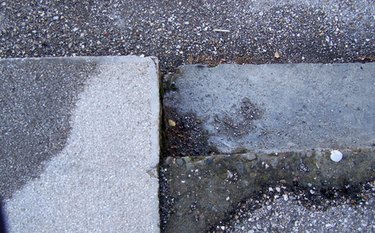
With new advances in color treatment, concrete flooring has moved from utilitarian surface to aesthetic statement. Despite new color treatments and the traditional positives of concrete floors, such as ease of cleaning and relative inexpensive cost, problems can crop up. Being aware of the dangers of concrete floors will allow you to enjoy their merits without worry.
Foot Pain
Video of the Day
The act of walking or standing for long periods of time on concrete can be tiring on the feet. Concrete flooring is not shock absorbent, which means that the impact of the foot hitting the floor is not cushioned in any way. Eventually, the ball and heel of the foot can become painful from this repeated rough treatment. Wearing cushioned inserts inside of your shoes will help control the pain, but placing a rubber mat over the concrete is the quickest way to remove the issue completely.
Video of the Day
Leg and Body Pain
Feet that are treated improperly have a big effect on how the rest of body feels. When the feet begin to ache from walking on concrete floors, the pain will often travel upwards, leaving the muscles of the legs and back aching as well. The body may begin to feel fatigued all over. Symptoms such as body pain can be relieved in the same manner as foot pain -- place a rubber mat over concrete surfaces that are stood on for long periods of time.
Skin Irritation
Concrete and cement contain chemicals which can irritate the skin. This risk is heightened by working with wet concrete, but dry concrete can still retain some residue of irritants. Walking barefoot on concrete flooring exposes the skin to these irritants and may lead to rashes on the bottom of your feet. When standing or walking on concrete, wear socks or shoes to limit the amount of contact that the floor has with skin.
Stumbling Hazards
Concrete can become cracked and broken, which poses a stumbling hazard. More often found outdoors than indoors, this hazard is mostly due to salt being spread over the area. Other issues that may cause cracking include high traffic or caustic spills. To prevent this problem, concrete companies produce coatings for floors that create a resistance to chemical erosion, thereby ensuring a crack-free and stumble-free place to walk.